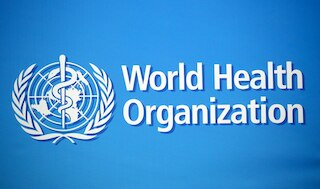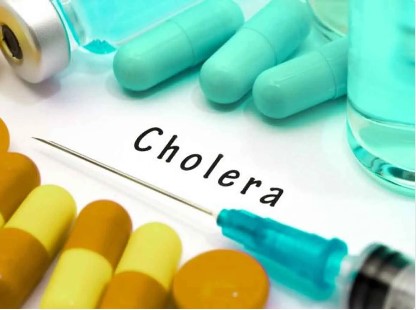Health
World AIDS Day: How AIDS Killed 460,000 People In Africa
Published
4 years agoon
By
Editor
The World Health Organisation, WHO, has disclosed that a total of 460,000 people were killed by AIDS.
This is as the world celebrate this year’s World AIDS Day
This means that a shocking 1,300 people died every day in Africa despite free access to effective treatment in the region.
The world health body also noted that two out of every three new HIV infections occurred in the African Region, corresponding to almost 2,500 new HIV infections every day.
WHO, however, noted that despite the challenges, Africa has made significant progress against HIV in the past decade, reducing new infections by 43 per cent and nearly halving AIDS-related deaths?
Disclosing these in a message to mark the 2021 World AIDS Day with the theme: “End inequalities: End AIDS. End pandemic”, was WHO Regional Director for Africa, Dr. Matshidiso Moeti.
Moeti said: “In the region, 86 per cent of people living with HIV know their status, and 76 per cent are receiving antiretroviral therapy.
READ ALSO: Edo: Tension As Gunmen Kidnap DPO, Demand N50million
“We also salute Botswana, which is on the home stretch to eliminating mother-to-child HIV transmission in what is a truly remarkable public health success.
“Only 16 countries have been certified for eliminating mother-to-child HIV transmission, none of which had as large an epidemic.
“It’s taken more than two decades of hard work by leaders, health workers and communities, illustrating what is possible when the health and welfare of mothers and children are prioritised.”
Moeti explained that the region cannot meet the 2030 target as it fell short of the expected 75 per cent reduction in new HIV infections and 81 per cent reduction in AIDS-related deaths by 2020.
“Despite the very high percentages of people living with HIV who know their status, and treatment rates, new HIV infections and AIDS-related deaths are not decreasing concomitantly,” Moeti stated.
She noted that it was critical for Africa to reach those who are fuelling the epidemic, address the persistent inequities in the provision of quality care and interventions.
“For instance, in West and Central Africa last year, key populations and their sexual partners accounted for 72 per cent of new adult HIV infections.
“Yet punitive laws, policies, hostile social and cultural environments, and stigma and discrimination, including in the health sector, prevent them from accessing services,” she noted.
Moeti stated that in Sub-Saharan Africa, young women are twice as likely to be living with HIV than men.
“For adolescents aged 15 to19 years, three in every five new infections are among girls who don’t have access to comprehensive sexuality education, who face sexual and gender-based violence and live with harmful gender norms.
“They also have less access to a school than their male peers.”
She said with COVID-19, people living with HIV appeared to be at elevated risk for virus-related illness and death.
“Nearly 70 per cent live in the WHO African Region, where only 4.5 per cent of people are fully vaccinated against COVID-19.
“As efforts to tackle COVID-19 continue gathering force, and the world prepares itself against future pandemics, we risk repeating many of the same mistakes that have kept us from ending AIDS.
“Addressing inequality is critical to ending both AIDS and COVID-19 and preventing future pandemics – potentially saving millions of lives, and safeguarding our society.
“We must ensure that everyone, everywhere, has equal access to HIV prevention, testing, treatment, and care, including COVID-19 vaccinations and services.
“This World AIDS Day, I urge governments to prioritize investment in health funding for community-led, human rights-based, gender transformative responses.
READ ALSO: Community Rises To End Gender Based Violence
“We must boost our essential health workforce, and secure equitable access to life-saving medicines and health technologies.
“Global solidarity and shared responsibility are critical components of the kind of rights-based approach we need if we are to end HIV/AIDS and COVID-19.
“As we remember those who have lost their lives to AIDS this year, we also acknowledge the terrible death toll the coronavirus pandemic has taken and continues to take.
“Going forward, we cannot afford to lose focus on the urgent need to end the inequities that drive AIDS and other epidemics around the world.
“It has been 40 years since the first HIV cases were reported. Yet, in Africa and globally, it remains a major public health concern,” she added.
You may like
Health
LASG FLags Off Polio Outbreak Response Campaign
Published
6 months agoon
January 20, 2025By
Editor
The Lagos State Government, through the Lagos State Primary Health Care Board, has launched the 2025 Polio Outbreak Response Campaign, reaffirming its commitment to eradicating polio and safeguarding the health of its children.
The ceremony, held at the Simpson Primary Healthcare Centre, was led by the First Lady of Lagos State, Dr. (Mrs.) Claudiana Ibijoke Sanwo-Olu, represented by Mrs. Widad Jumoke Mustafa, a member of the Committee of Wives of Lagos State Officials (COWLSO).
In her address, the First Lady emphasised the state government’s proactive measures to keep Lagos polio-free, highlighting the critical importance of the campaign in preventing the debilitating effects of poliomyelitis, which can result in paralysis or death.
READ ALSO: IMPEACHMENT: Lagos Ex-Speaker, Obasa’s ‘Sins’ Revealed
The First Lady also called on parents, community leaders, and stakeholders to support the campaign by ensuring eligible children are vaccinated.
Targeting children aged 0-59 months, vaccination teams will administer the Oral Polio Vaccine (OPV) to prevent virus transmission.
Dr. Kemi Ogunyemi, the Special Adviser on Health, expressed gratitude to Lagosians for their continued cooperation in the fight against polio. While appreciating all healthcare workers and partners for their services, Mrs. Ogunyemi encouraged parents to present their children and wards for the exercise.
Also speaking, the Chairman of Lagos Mainland Local Government, Mrs. Omolola Rashidat Essien opined that Immunization is key in ensuring that children are kept safe from polio and other vaccine preventable diseases.
Dr. Abimbola Bowale, the Supervising Permanent Secretary, Lagos State Primary Health Care Board, who also spoke at the event, underscored the life-saving importance of immunization.
“All children aged 0-59 months need multiple doses of the polio vaccine to ensure full protection. Any child missed represents a potential risk for the poliovirus to spread. The vaccine is safe, effective, and crucial in keeping our communities polio-free,” he stated.
Dr. Bowale also outlined several strategies to ensure the success of the campaign, including fixed post teams stationed at primary healthcare centres and public health facilities, house-to-house visits, and a transit strategy to reach special locations such as places of worship, schools, motor parks, and other public venues.
The event concluded with Dr. (Mrs.) Claudiana Ibijoke Sanwo-Olu officially launched the campaign, marking a renewed effort to maintain Lagos State’s polio-free status.

The Lagos state suspected cholera cases have risen to 421.
The Commissioner for Health, Akin Abayomi disclosed this on his Instagram handle @profakinabayomi on Saturday.
“As of June 20, 2024, an additional four suspected cholera cases have been reported, as illustrated in the accompanying graph,” he wrote.
He noted that the Emergency Operations Centre in collaboration with all relevant partners is actively engaged in contact tracing, community-based surveillance, awareness campaigns, sample testing, and ensuring that confirmed cholera cases receive appropriate medical treatment.
READ ALSO: Two Suspects Arrested For Stealing Car From Mosque During Juma’at Prayer
On Friday, the commissioner confirmed 35 cases out of the 417 suspected cases and 24 deaths across 20 Local Government Areas in the state.
The cases were reported from Agege, Badagry, Ikeja, Mushin, Ajeromi-Ifelofun, Epe, Ikorodu, Ojo, Alimosho, and Eti-Osa.
Others were Kosofe, Oshodi-Isolo, Amuwo-Odofin, Ibeju-Lekki, Lagos Island, Shomolu, Apapa, Ifako-Ijaiye, Lagos mainland, and Surulere.
Cholera is a food and water-borne disease caused by ingesting the bacteria— Vibrio cholerae — in contaminated water and food. Cholera can cause severe acute watery diarrhoea, and the severe forms of the disease can kill within hours if left untreated.
In Nigeria, cholera is an endemic and seasonal disease, occurring annually mostly during the rainy season and more frequently in areas with poor sanitation.
READ ALSO: Police Arrest 28yr Old Suspected Cultists, Recover Gun In Delta Community
The World Health Organisation on Thursday announced a spike in cholera in several regions of the world, with almost 195,000 cases and over 1,900 deaths reported in 24 countries since the start of 2024.
WHO said the Eastern Mediterranean Region reported the highest number of cases, followed by the African Region, the Region of the Americas, the Southeast Asia Region, and the European Region.
The global health body, however, noted that there are no reported cases in the Western Region, according to its bulletin released on Wednesday.
It said it exhausted its global stockpile of Oral Cholera Vaccines by March but was able to exceed “the emergency target of five million doses in early June for the first time in 2024.”

By Silver Yeibake
Autism, commonly known as Autism Spectrum Disorder (ASD), is a neurodevelopmental disorder that affects communication, social interaction, and behavior. Autism is referred to as a spectrum condition since it can manifest in a variety of symptoms and abilities. While the actual cause of autism is unknown, evidence suggests that genetic and environmental factors interact to influence its development.
The risk factors include a sibling with autism, advanced age of parents, exposure to certain air pollutants and pesticides before birth, extreme prematurity, mothers with diabetes, immune system disorders or obesity, any difficulty with delivery leading to deprivation of oxygen to the baby’s brain, fever during pregnancy, lack of certain vitamins minerals during pregnancy, and certain genetic conditions, such as Down, fragile X, and Rett syndromes.
“Risk factors can not on their own cause a disease. However, they can increase the likelihood of that disease in a person.”
It is important to know that contrary to trending claims online, there is no scientific or medical evidence that vaccines or consumption of sugar are risk factors for autism.
READ ALSO: Kidney Stones: What You Need To Know
Autism is defined by difficulties in social interaction and communication. Individuals with autism may struggle to grasp social cues, maintain eye contact, and engage in typical back-and-forth conversations. Some people may also engage in meaningless, repetitive actions, such as hand-flapping or rocking, and have strong interests in specific areas.
It is essential to remember that autism is a lifelong diagnosis, but with early intervention and adequate care, people with autism can live fulfilling lives.
Autism treatment frequently includes behavioral therapy, speech therapy, occupational therapy, and social skills training. Each individual with autism is unique, thus interventions should be tailored to meet their personal needs and strengths.
In spite of the difficulties that autism can cause, many people with autism possess unique talents and abilities. Some people may succeed in fields such as music, art, mathematics, or programming, thus it is important for society to acknowledge and honor the qualities and achievements of people with autism.
In summary, autism is a complicated and diverse disorder that affects individuals in various ways. By raising autism knowledge, understanding, and acceptance, we can build a more inclusive society in which people with autism can thrive and attain their full potential.
Dr. Yeibake, Weriwoyingipre Silver.
Senior Registrar,
Faculty Of Pediatrics,
WACP
- Congress Newspaper @4: X-Raying The Evolution Of Media In Ijaw Nation
- JUST IN: Psychiatric Hospital Staff Shot Dead In Benin
- Supreme Court: Jubilant Supporters Stunned, Locked Out Of Edo Govt House [PHOTOS]
- Gunmen Invade Catholic Seminary School In Edo, Kill One, Abduct Three
- Pastor Arraigned Over Alleged Rape Of Married Woman In Edo
- OPINION: BAT Rejects Trump’s Amazing Offer
- Nurses Reject NSIWC Circular On Allowances
- LASIEC Releases Validated Candidates’ List Gor Lagos LG Polls
- Lagos Police Deploys 30,000 Officers For LG Polls
- How Law Student’s Inability To Pay N120,000 Caused Her Death At UNIZIK
About Us
Trending

 Metro2 days ago
Metro2 days agoMysterious Bird Found Inside Auchi Poly Lecturer’s Office, Killed

 News4 days ago
News4 days agoBREAKING: FG Officially Releases Age Limit For Admission Into Tertiary Institutions

 News4 days ago
News4 days agoOPINION: APC’s Leprosy Versus ADC’s Scabies

 Politics3 days ago
Politics3 days ago‘The Man I Defeated 32 Years Ago Hasn’t Forgiven Me’ – Ita-Giwa Laments Discrimination Against Women In Politics

 News4 days ago
News4 days agoFlash Flood Warning: Sokoto, Edo, Akwa Ibom, 17 Other States At Risk In July — NiMet

 Politics3 days ago
Politics3 days ago97 Lawyers Line Up To Defend ADC, Mark, Aregbesola Against APC’s ‘Fake Lawsuit’

 Entertainment5 days ago
Entertainment5 days agoOPINION: From The North, ‘A Storm Is Coming’

 News4 days ago
News4 days agoObi In Benin, Donates N15m To St Philomena School of Nursing Sciences

 News2 days ago
News2 days ago‘I Feel Your Pain’ – Ighodalo Reacts To S’Court Verdict On Edo Guber Election

 Politics5 days ago
Politics5 days agoINEC Announces Dates For Commencement Of Continuous Voter Registration In Osun



















